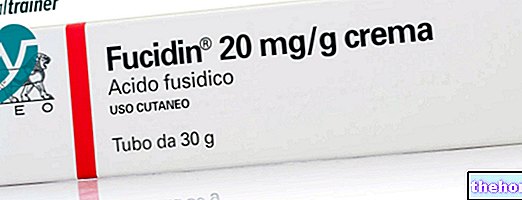Active ingredients: Hydrocortisone (Hydrocortisone sodium phosphate)
CORTIVIS 0.3 ML Eye drops
Why is Cortivis used? What is it for?
Cortivis 0.3 ml eye drops, solution contains the active substance hydrocortisone sodium phosphate. Hydrocortisone sodium phosphate is an anti-inflammatory that belongs to the corticosteroid group of medicines.
Cortivis is used for the treatment of inflammatory and allergic diseases of the anterior part of the globe.
Contraindications When Cortivis should not be used
Do not use Cortivis:
- If you are allergic to hydrocortisone or any of the other ingredients of this medicine.
- If you suffer from high eye pressure.
- If you have a "viral infection of the eye".
- If you have a "fungal (fungal) infection of the eye" or a "bacterial infection known as tuberculosis
- If you have an "eye infection" that produces pus, an inflammation in the edges of the eyelids or a sty.
Precautions for use What you need to know before taking Cortivis
Talk to your doctor or pharmacist before using Cortivis.
The use of steroids in inflammations of the cornea (keratitis) of viral origin requires great caution and can only be allowed under close supervision by the ophthalmologist.
In diseases that cause thinning of the cornea or sclera, the use of topical steroids can cause perforation.
In the absence of clinical improvement, the use of corticosteroids should not be prolonged as it may obscure the extent of an infection due to the masking effect of steroids. A possible fungal infection should be suspected in the case of a corneal ulcer in which prolonged treatment with a steroid is ongoing or has been done.
The use of corticosteroids should not be repeated or prolonged without appropriate checks by the ophthalmologist to rule out the onset of serious side effects such as infections, cataract formation or increased internal pressure in the eye.
Care should be taken when administering the eye drops to elderly patients.
Interactions Which drugs or foods can change the effect of Cortivis
Tell your doctor or pharmacist if you are using, have recently used or might use any other medicines.
Warnings It is important to know that:
Pregnancy and breastfeeding
If you are pregnant or breast-feeding, think you may be pregnant or are planning to have a baby, ask your doctor or pharmacist for advice before using Cortivis.
Pregnancy
There are no adequate data from the topical use of hydrocortisone sodium phosphate in pregnant women. Studies in animals have shown reproductive toxicity. CORTIVIS 0.3 ml eye drops, solution should not be used during pregnancy unless absolutely necessary.
Feeding time
It is not known whether topical hydrocortisone sodium phosphate is excreted in human milk. The excretion of hydrocortisone sodium phosphate following topical administration has not been studied in animals.
A decision must be made whether to discontinue breast-feeding or to discontinue CORTIVIS 0.3 ml therapy taking into account the benefit of breast-feeding for the child and the benefit of therapy for the woman.
Driving and using machines
Cortivis 0.3 ml eye drops, solution has no influence on driving and using machines.
Dosage and method of use How to use Cortivis: Dosage
Always use this medicine exactly as your doctor or pharmacist has told you. If in doubt, consult your doctor or pharmacist.
The recommended dose is 2 drops in the eye, 2 or more times a day, depending on the severity of the disease.
Senior citizens
There is no information suggesting a change in dosage in elderly subjects, however you should be careful if you belong to this patient group and should use this medicine.
Pay attention in the case of elderly subjects.
Do not use a double dose to make up for a forgotten dose.
If you have to stop treatment, contact your doctor immediately
Overdose What to do if you have taken too much Cortivis
If you use more Cortivis than you should, contact your doctor immediately.
Side Effects What are the side effects of Cortivis
Like all medicines, this medicine can cause side effects, although not everybody gets them.
Possible side effects are:
- increased pressure inside the eye which can cause glaucoma;
- cataract formation following prolonged treatments;
- development or worsening of herpes simplex or fungal bacterial infections;
- delayed healing;
- headache;
- lowering of blood pressure;
- rhinitis and pharyngitis.
Serious side effects (thickening of the sclera, dilation of the pupil, sagging of the eyelids) may occur after prolonged administration.
Compliance with the instructions contained in the package leaflet reduces the risk of undesirable effects
Reporting of side effects
If you get any side effects, talk to your doctor or pharmacist. This includes any possible side effects not listed in this leaflet. You can also report side effects directly via the national reporting system at: www.agenziafarmaco.gov.it/it/responsabili. By reporting side effects you can help provide more information on the safety of this medicine.
Expiry and Retention
Keep this medicine out of the sight and reach of children.
Do not use this medicine after the expiry date which is stated on the carton after "Expiry". The expiry date refers to the last day of that month.
The expiry date refers to the product in intact and correctly stored packaging.
Do not throw any medicines via wastewater or household waste. Ask your pharmacist how to throw away medicines you no longer use. This will help protect the environment.
Other Information
What Cortivis contains
The active ingredient is hydrocortisone sodium phosphate.
Each single-dose container contains 1.005 mg of hydrocortisone sodium phosphate.
The other ingredients are:
Hyaluronic acid sodium salt, sodium chloride, potassium chloride, dibasic sodium phosphate dodecahydrate, monobasic sodium phosphate dihydrate, water for injections.
What Cortivis looks like and contents of the pack
Eye drops, solution 4 or 6 sachets containing 5 single-dose containers of 0.33 ml.
Marketing authorization holder and manufacturer.
Source Package Leaflet: AIFA (Italian Medicines Agency). Content published in January 2016. The information present may not be up-to-date.
To have access to the most up-to-date version, it is advisable to access the AIFA (Italian Medicines Agency) website. Disclaimer and useful information.
01.0 NAME OF THE MEDICINAL PRODUCT
CORTIVIS 0.3 ML EYE DROPS, SOLUTION
02.0 QUALITATIVE AND QUANTITATIVE COMPOSITION
Each single-dose container contains:
Active principle
Hydrocortisone sodium phosphate 1.005 mg.
For the list of excipients, see section 6.1.
03.0 PHARMACEUTICAL FORM
Eye drops, solution.
04.0 CLINICAL INFORMATION
04.1 Therapeutic indications
Inflammatory and allergic affections of the anterior part of the ocular globe.
04.2 Posology and method of administration
Apply 2 drops (equal to about 0.2 mg) in the conjunctival sac, 2 or more times a day, depending on the severity of the disease.
Senior citizens
There is no information suggesting a change in dosage in elderly subjects, however care should be taken when administering the medicinal product to this patient group (see 4.4).
04.3 Contraindications
Hypersensitivity to any component of the product. Ocular hypertension. Acute herpes simplex and viral diseases of the cornea in the acute ulcerative phase, except in association with specific chemotherapeutic agents for the herpetic virus, conjunctivitis with ulcerative keratitis even in the initial phase. Tuberculosis or mycosis of the eye. Acute purulent ophthalmias, purulent conjunctivitis and purulent and herpetic blepharitis which can be masked or aggravated by anti-inflammatories.
04.4 Special warnings and appropriate precautions for use
The use of steroids in viral herpetic keratitis requires great caution and can only be permitted under close supervision by the ophthalmologist.
In diseases that cause thinning of the cornea or sclera, the use of topical steroids can cause perforation.
In the absence of clinical improvement, the use of corticosteroids should not be prolonged as it may obscure the extent of an infection due to the masking effect of steroids.
A possible fungal infection should be suspected in the case of a corneal ulcer in which prolonged treatment with a steroid is ongoing or has been done.
Treatment with corticosteroids should not be repeated or prolonged without appropriate controls to exclude the onset of intra-ocular pressure and unsuspected infections or cataract formation.
Care should be taken when administering the eye drops to elderly patients.
04.5 Interactions with other medicinal products and other forms of interaction
There are no known interactions.
04.6 Pregnancy and breastfeeding
There are no adequate data from the topical use of hydrocortisone sodium phosphate in pregnant women. Studies in animals have shown reproductive toxicity (see 5.3). CORTIVIS 0.3 ml eye drops, solution should not be used during pregnancy unless absolutely necessary.
It is not known whether topical hydrocortisone sodium phosphate is excreted in human milk.
The excretion of hydrocortisone sodium phosphate following topical administration has not been studied in animals.
A decision must be made whether to continue / discontinue breastfeeding or to continue / discontinue CORTIVIS 0.3 ml therapy taking into account the benefit of breastfeeding for the child and the benefit of therapy for the woman.
04.7 Effects on ability to drive and use machines
CORTIVIS 0.3 ml eye drops, solution has no influence on the ability to drive and use machines.
04.8 Undesirable effects
Raised intraocular pressure with possible development of glaucoma; posterior subcapsular cataract formation following prolonged treatments; development or worsening of herpes simplex or fungal bacterial infections; delayed healing; manifestation, after prolonged administration, of serious side effects such as thickening of the sclera, mydriasis, relaxation of the eyelids.
Since systemic absorption may occur following the topical use of corticosteroids, systemic adverse effects may occur: headache, hypotension, rhinitis and pharyngitis
04.9 Overdose
No cases of overdose have been reported.
05.0 PHARMACOLOGICAL PROPERTIES
05.1 Pharmacodynamic properties
Therapeutic category: anti-inflammatory.
ATC code: S01BA02.
Hydrocortisone is a corticosteroid produced by the adrenal gland and has anti-inflammatory properties.
The mechanism of action at the level of ocular inflammation would be due to its ability to induce the synthesis of lipocortin, the specific inhibitor of phospholipase A2, thus blocking the arachidonic acid cascade and the formation of phlogogenic factors, such as prostaglandins, thromboxanes and leukotrienes.
05.2 Pharmacokinetic properties
Following administration into the conjunctival sac, hydrocortisone is absorbed into the aqueous humor and systemic absorption may occur. However, since the dosage of hydrocortisone in the topical ophthalmic preparation is much lower than that used systemically, there is usually no clinical evidence of systemic absorption.
05.3 Preclinical safety data
Non-clinical studies have shown potential for reproductive toxicity as teratogenic effects such as cleft palate and sexual organ abnormalities have been reported in mice and rabbits treated with corticosteroids applied to the eye.
06.0 PHARMACEUTICAL INFORMATION
06.1 Excipients
Hyaluronic acid sodium salt, sodium chloride, potassium chloride, dibasic sodium phosphate dodecahydrate, monobasic sodium phosphate dihydrate, water for injections.
06.2 Incompatibility
There are no known incompatibilities.
06.3 Period of validity
2 years.
06.4 Special precautions for storage
None.
06.5 Nature of the immediate packaging and contents of the package
Carton containing 4 or 6 heat-sealed aluminum bags, each of which contains a strip of 5 single-dose containers in low density polyethylene of 0.33 ml.
06.6 Instructions for use and handling
None.
07.0 MARKETING AUTHORIZATION HOLDER
Medivis S.r.l. - Corso Italia, 171 - 95127 Catania - Italy
08.0 MARKETING AUTHORIZATION NUMBER
AIC n. 038555013
AIC n. 038555025
09.0 DATE OF FIRST AUTHORIZATION OR RENEWAL OF THE AUTHORIZATION
21 October 2010
10.0 DATE OF REVISION OF THE TEXT
23 May 2011




























